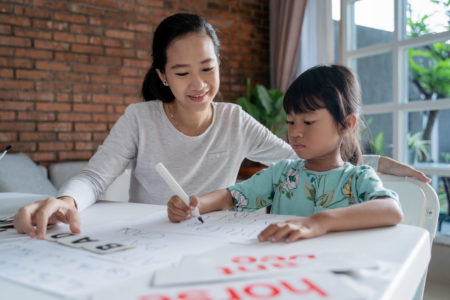As the fall season begins, school does too.
 Things are a little different this year – some schools will have much smaller class sizes, some will be holding classes on alternating days, some will teach totally virtual courses, some a hybrid of both, and some parents have opted to adapt to homeschooling (or a version of it). With all these changes, some happening day-to-day, how can you ensure your kids are safe in their environments? If you plan on keeping your kids home from in-person school, there are a couple of great educational options. But this kind of education still requires you to take protective steps to prevent abuse.
Things are a little different this year – some schools will have much smaller class sizes, some will be holding classes on alternating days, some will teach totally virtual courses, some a hybrid of both, and some parents have opted to adapt to homeschooling (or a version of it). With all these changes, some happening day-to-day, how can you ensure your kids are safe in their environments? If you plan on keeping your kids home from in-person school, there are a couple of great educational options. But this kind of education still requires you to take protective steps to prevent abuse.
Homeschooling
Even before the pandemic, homeschooling has become increasingly popular. Today several million children are homeschooled each year, and this year we can expect a record number of children will be homeschooled. Homeschooling gives parents the most control over their children’s education, and can be beneficial for students whose learning styles aren’t well supported in mainstream institutions. However, there are a lot of questions and concerns surrounding child protection while homeschooling, homeschooling and socialization, and homeschooling vs. remote learning.
Home Learning Pods
Home learning pods are a new trend for families who opt not to send students back into school buildings. Typically, it works like this: when families enroll in a learning pod program, a teacher will work through the homeschooling lesson plans and curriculum with a small group of students at one family’s home. Children will have the experience of learning in a small group setting, with professional instruction, without entering a school building. Homeschooling groups led by a tutor or a learning pod can change the way your kids interact with adults, including safe adults, and other children.
Both of these educational options have pros and cons. And, just like in a mainstream school experience, parents still need to practice abuse prevention with either option. Like any new situation or change to your children’s schedule, what does this change mean for protecting your kids from abuse?
The important thing to remember is that the same child safeguarding principles apply – set expectations, minimize opportunity, and have open communication with your kids.
Whether you’re using the traditional homeschooling approach or the “learning pods” approach, make sure your homeschooling group is a safe environment:
- Is the program supplying the teacher? Or is it a teacher from your student’s old school? Either way, make sure proper vetting has happened – ask the program/school what their hiring process entails. A background check is not enough. Push for child sexual abuse prevention training. Here’s some guidance for how to get started.
- Will you or another safe adult be at home? 80% of child sexual abuse incidents happen in one-on-one situations.1 If you and the other parents are working, can you take turns dropping in unexpectedly to check-in?
- Be clear about one-on-one situations with children as well. 40% of children who are sexually abused, are abused by older or more powerful children.1 Make a rule that kids should be in groups of three or more.
- What are the rules about where the teacher and kids can go in the house? Staying in shared, open areas of the house is ideal; don’t allow access to bedrooms or secluded areas.
- Set expectations by talking to the teacher, children, and other parents openly about boundaries.
- Have ongoing conversations with your kids about their bodies and boundaries. Let them know they can tell you anything and empower them to be vocal about if they are uncomfortable.
- Put daily check-ins in place – for younger kids, call and ask to speak with them or have scheduled check-ins, for older kids be in contact via text and phone.
- After the day is over, ask them what they learned, what they liked, what they didn’t like – listen to what they have to say.
Homeschooling and home learning pods can be a big experiment! We know there are a lot of unknowns right now and it can be overwhelming. Take a deep breath; you can still keep your kids as safe as possible, even in the face of the unknown. The most important thing is to be vigilant and have open and on-going conversations with your kids. You can do this—together!
Additional Resources:
Protecting Children During a Crisis Training
Online Safety Learning Guide for Parents
NCMEC’s Online Safety Resources for (Virtual) Back to School
MBF’s Talking About Sensitive Subjects with Kids
NetSmartz Kids
References:
-
Finkelhor. D. (2012). Characteristics of crimes against juveniles. Durham, NH: Crimes Against Children Research Center.
Follow us on social media to stay up to date and join the conversation.


